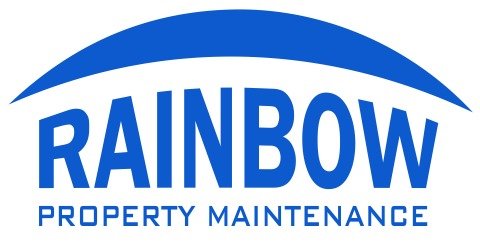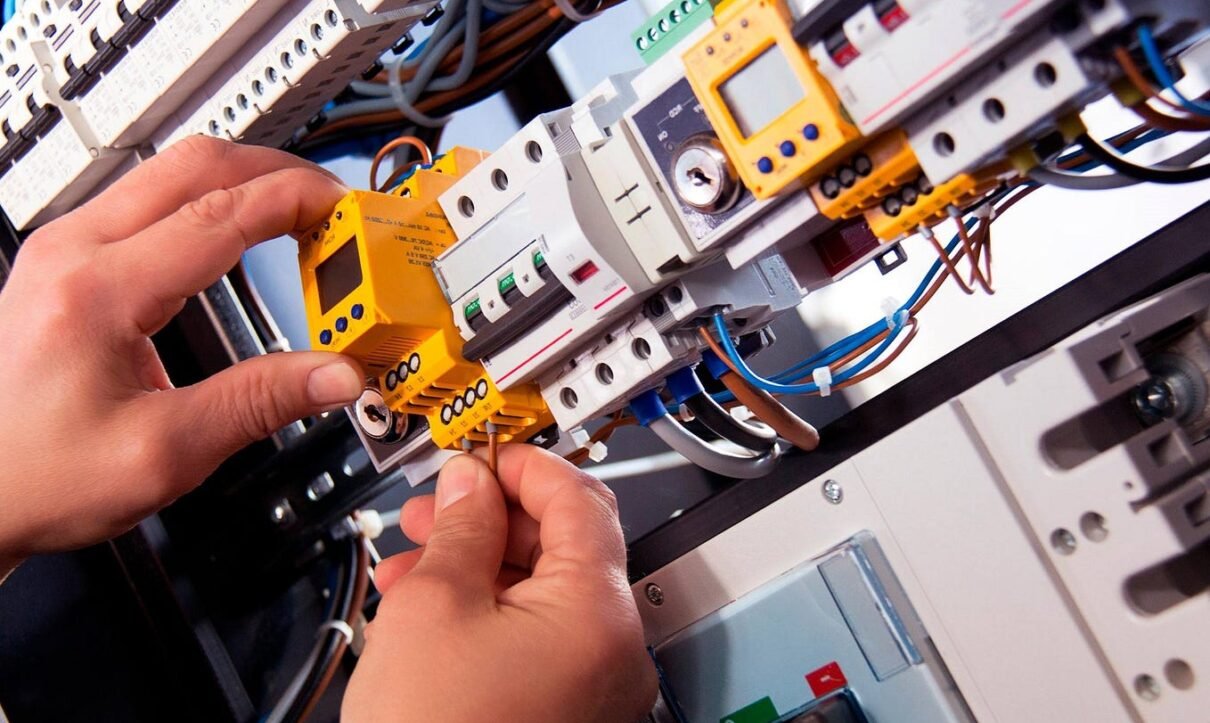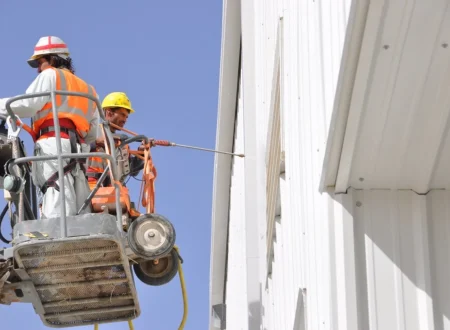Why Preventative Maintenance is Crucial for Commercial Buildings
The sustainability and efficiency of a commercial building rest significantly on the shoulders of preventative maintenance.
Let’s dive into why this practice is not just a choice but a necessity.
Key Takeaways:
- Preventative maintenance extends the lifespan of building infrastructure and reduces the risk of costly emergency repairs.
- Regular upkeep ensures compliance with health and safety regulations, protecting both occupants and owners from legal liabilities.
- A well-maintained building boosts employee productivity and morale by providing a safe and pleasant working environment.
- Proactive maintenance strategies can lead to significant cost savings by identifying issues before they escalate.
- It reflects positively on brand image, demonstrating professionalism and a commitment to quality.
The Foundations of Preventative Maintenance
Preventative maintenance is more than a simple checklist; it’s the cornerstone of maintaining commercial buildings in prime condition. Fostering an environment where every system operates smoothly, it plays a pivotal role in avoiding the unforeseen breakdowns that can paralyze business operations.
Understanding the scope and significance of preventative maintenance
At its core, preventative maintenance involves regular, planned activities devoted to preventing potential failures or malfunctions. Beyond the immediate aim of safeguarding equipment, it bolsters the overall infrastructure of a commercial property, ensuring that every aspect from the HVAC system to the electrical grid is running optimally. This strategic approach not only curbs the likelihood of emergency repairs but also significantly extends the lifespan of the property’s key installations.
Identifying areas most benefiting from regular upkeep
The most critical systems within a commercial property—such as heating, ventilation, air conditioning, plumbing, and electrical systems—demand consistent attention. Identifying these areas and understanding their maintenance needs is crucial for formulating an effective preventive strategy. Regular inspections, cleaning, and minor adjustments can avert major repairs, thereby maintaining operational continuity and ensuring the safety and comfort of both employees and customers.
Developing a comprehensive maintenance plan
A well-structured maintenance plan is indispensable for the sustained health of a commercial building. This plan should include scheduled inspections, maintenance activities, and timely updates based on the latest operating conditions and technological advances. Essential to this approach is the alignment with industry best practices and compliance requirements, guaranteeing that the building’s operations are not just uninterrupted but also in line with legal standards.
We understand the depth of responsibility that comes with managing commercial properties. Our preventive maintenance services are structured to address the full spectrum of needs a building might face. By entrusting us with your maintenance needs, you’re ensuring a high standard of upkeep, operational reliability, and an unwavering adherence to safety norms.
Discover the range of our preventative maintenance services for commercial buildings.
Cost-Benefit Analysis of Preventative Maintenance
Preventative maintenance versus reactive maintenance represents a critical decision point for facility management in commercial buildings. The choice impacts not just the bottom line but also the longevity and efficiency of building operations.
Comparing costs of preventative vs. reactive maintenance
The initial outlay for a preventative maintenance program might appear higher than the wait-and-fix approach of reactive maintenance. However, regular upkeep significantly lowers the likelihood of sudden, costly breakdowns. For instance, repairing a major HVAC failure costs substantially more than routine inspections and minor adjustments. Preventative maintenance not only saves on these emergency expenditures but also reduces downtime, contributing to uninterrupted business operations.
Case studies highlighting long-term savings
Evidence from multiple sectors shows that investing in preventative maintenance can result in remarkable cost savings over time. A study in the hospitality sector revealed that hotels adopting systematic maintenance strategies experienced a decrease in total repair and maintenance costs by up to 20%. These savings stem from reduced severe repairs, lower energy consumption, and improved equipment life spans.
Investment in maintenance vs. cost of negligence
The cost of negligence can considerably exceed the investment in preventative maintenance. Facilities that neglect regular maintenance may face escalated utility bills due to inefficient energy use, higher repair costs, and even legal penalties for failing to meet safety standards. Additionally, the reputation damage from operational failures can significantly impact business revenue and growth prospects.
By embracing preventative maintenance, facility managers in commercial buildings can secure a significant return on investment. Enhanced operational efficiency, energy savings, and extended asset life are just the beginning. A strategic approach to maintenance underlines a commitment to quality, safety, and sustainability, shaping the perceptions of employees, clients, and stakeholders alike.
Discover the range of our preventative maintenance services for commercial buildings.
Compliance and Safety
Maintaining compliance with regulatory requirements is not just a legal duty; it’s an integral part of managing a commercial property. These regulations are designed to ensure that buildings are safe, healthy environments for employees and visitors alike.
Regulatory requirements for building maintenance
In the realm of commercial properties, various regulations govern everything from fire safety standards to air quality and structural integrity. Compliance involves regular inspections, adherence to specific maintenance routines, and record-keeping to prove due diligence. This diligence is not only about ticking boxes but ensuring that every aspect of the building contributes to a secure and robust operational framework.
Role of maintenance in ensuring safety and compliance
Effective maintenance strategies serve two primary functions in the context of regulatory compliance and safety. First, they act as a safeguard, preventing potential hazards that could compromise the well-being of occupants. Second, they provide a structured approach to document all efforts taken towards this end, which can be crucial during inspections or in the unfortunate event of an incident.
Avoiding legal repercussions and fines
Ignoring or cutting corners on maintenance can have severe financial and reputational consequences. Regulations are in place not as mere suggestions but as enforced standards, with non-compliance resulting in hefty fines, legal actions, and possible shutdowns. Moreover, the cost of rectifying issues post-factum far outweighs what would have been spent on regular, preemptive maintenance.
For facility managers, the message is clear: investing in regular maintenance is not merely a regulatory hoop to jump through but a fundamental aspect of operational excellence and safety. Our role is to support you in this endeavor, providing expertise and solutions that keep your property not just compliant, but thriving.
Understand the importance of compliance in facility maintenance and how we can help.
Enhancing Employee and Customer Experience
Creating a positive atmosphere in commercial buildings goes beyond aesthetics; it directly influences employee productivity and customer satisfaction. A well-maintained environment speaks volumes about a company’s values and attention to detail, making it a crucial aspect of business operations.
Impact of building maintenance on employee productivity
A clean, orderly, and healthy environment not only boosts morale but has been shown to increase productivity significantly. Employees thrive in spaces that are well-lit, with optimal air quality and comfort, reducing absenteeism and enhancing overall well-being. Regular maintenance ensures that these conditions are consistently met, contributing to a more motivated and focused workforce.
Creating a positive first impression for clients
First impressions are lasting. The state of a commercial property can either invite potential customers in or turn them away. A well-kept building, free from visible wear and tear, creates a welcoming atmosphere that reflects highly on the business it houses. This attention to upkeep is often seen as a parallel to the quality of services or products offered.
Maintaining a healthy and appealing environment
Ongoing maintenance is key to preventing the buildup of dust, mold, and other pollutants that can compromise air quality and health. Landscaping, cleanliness, and structural integrity also play a significant role in maintaining an inviting atmosphere that customers and employees appreciate.
In sum, the significance of maintenance in commercial buildings extends far beyond simple repairs and cleanliness. It is a strategic investment in creating a productive, healthy, and welcoming environment that benefits everyone who walks through the doors.
Explore eco-friendly cleaning and maintenance options.
Sustainability and Environmental Impact
In today’s world, the sustainability of operations and their environmental impact are at the forefront of business concerns, especially in facility management. Adopting eco-friendly maintenance practices is not just about adhering to regulations; it’s a commitment to preserving our planet for future generations.
Eco-friendly maintenance practices
Transitioning to green maintenance involves using products and processes that have a minimal environmental footprint. This includes the use of non-toxic cleaning agents, energy-efficient lighting and equipment, and water-conservation techniques. Such practices not only reduce harmful emissions but also contribute to a healthier indoor environment for building occupants.
Reducing carbon footprint through efficient building management
Efficient building management is instrumental in shrinking a facility’s carbon footprint. Implementing smart technologies for energy management can significantly cut down power consumption, lower operational costs, and reduce greenhouse gas emissions. Strategies like optimizing HVAC systems, upgrading insulation, and installing solar panels are pivotal steps towards a greener, more sustainable operation.
Energy saving strategies in maintenance
Energy conservation is a critical element of sustainable facility upkeep. Routine maintenance of heating, ventilation, air conditioning, and refrigeration systems ensures they are running at peak efficiency, thus lowering energy use and costs. Additionally, embracing renewable energy sources and implementing automated systems for lighting and climate control can drastically decrease energy expenditure.
Adopting sustainable practices in building maintenance not only aligns with global efforts to combat climate change but also positions a company as a responsible and forward-thinking entity. It reflects a genuine care for the environment and the well-being of employees and customers alike, fostering a positive public image.
Explore eco-friendly cleaning and maintenance options.
Technology in Preventative Maintenance
The integration of technology into preventative maintenance practices marks a revolution in facility management. Innovative tools and processes not only optimize operations but ensure commercial properties maintain their prime condition with greater efficiency and less overhead.
Innovative tools and technologies for efficient maintenance
Advances in technology offer myriad solutions that streamline maintenance tasks. From infrared thermography for detecting electrical faults to drones for inspecting building exteriors, these tools facilitate thorough and regular inspections without the need for intrusive measures. Utilizing such technologies minimizes disruptions to daily operations while ensuring every square inch of the property receives attention.
Integrating smart systems for real-time monitoring and management
Smart building technologies have transformed maintenance strategies from reactive to proactive and predictive. Systems equipped with sensors and connected via the Internet of Things (IoT) allow for real-time monitoring of a building’s vital signs. This means issues can be identified and addressed before they escalate into costly repairs, significantly extending the lifespan of building infrastructure.
The future of maintenance: Predictive analytics and automation
Predictive analytics harnesses data collected from smart systems to forecast potential breakdowns, allowing maintenance to be scheduled at the optimum time. Meanwhile, automation in maintenance schedules ensures that tasks are performed consistently and in a timely manner, further reducing the likelihood of equipment failure. These technological advancements not only reduce maintenance costs but also contribute to sustainability by optimizing resource use.
Embracing these technologies in preventative maintenance efforts ensures commercial buildings are not just maintained but constantly improved upon. This forward-thinking approach not only safeguards the property’s value but also enhances the experience of employees and customers alike.
Learn how smart technology integrates with preventative maintenance strategies.
Conclusions
In summary, preventative maintenance emerges not merely as an operational task, but as a strategic investment that substantially contributes to the long-term success and sustainability of commercial buildings. We have delineated how much maintenance directly benefits operational efficiency, leads to significant cost savings, ensures compliance and safety, and positively impacts both employee productivity and customer satisfaction. Discover the range of our preventative maintenance services for commercial buildings. Integrating smart technology into maintenance strategies modernizes the approach, allowing for real-time monitoring and management, reducing the likelihood of costly repairs, and enhancing the ability to act preemptively rather than reactively. Including predictive analytics and automation represents the future of maintenance, where efficiency and sustainability go hand in hand. Furthermore, eco-friendly maintenance practices play a pivotal role in reducing a building’s carbon footprint. As we explore eco-friendly cleaning and maintenance options, we underscore the importance of adopting strategies that not only preserve the environment but also create healthier and more appealing spaces for occupants. Lastly, compliance and safety are paramount, with regular maintenance ensuring that buildings meet health and safety regulations, thereby protecting occupants, owners, and managers from potential legal repercussions and fines. Our commitment to upholding the highest standards of maintenance is unwavering, as we understand the critical nature of these responsibilities. We encourage you to embrace preventative maintenance to protect and elevate your commercial property. Trust our professionals to deliver meticulous care and unparalleled expertise. Together, we can ensure that your property not only meets but exceeds expectations, creating a lasting positive impression on all who visit or work within its walls.
Frequently Asked Questions (FAQ):
What is the first step in starting a preventative maintenance program?
The first step is conducting a thorough assessment of your property to identify all maintenance needs and priorities.
How often should preventative maintenance be scheduled?
The frequency depends on the specific requirements of each facility, but a routine schedule should be established based on industry standards and manufacturer recommendations.
Can preventive maintenance save money in the long run?
Absolutely. By identifying and addressing issues early on, businesses can avoid costly repairs and downtime.
Is there a role for technology in preventative maintenance?
Yes, technology plays a crucial role by providing tools for more efficient maintenance management, predictive analytics, and real-time monitoring.













2 Comments
Comments are closed.